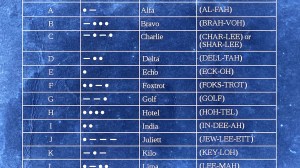Comedians Jay Foreman (previously) and Mark Cooper-Jones of Map Men quite appropriately explain the history of maps, focusing on latitude and longitude, the latter of which was quite problematic for boats.
Calculating latitude has always been easy. In the olden days, all sailors had to do was look at the sun and then, depending on how high it was in the sky, measure the… angle to work out the latitude… somehow. The point is it wasn’t a problem. Longitude however was a big problem. How can you measure your eastness or westness using the sun when the sun spends all day gradually moving across the sky?
It was only when the Queen of England offered a prize for anyone who could figure out how to solve the problem of longitude that a solution was discovered by clockmaker John Harrison of Yorkshire. Unfortunately, this solution took over 19 years to become a reality due to Harrison’s need for perfection, during which time, politics came into play. Despite this, Harrison’s amazing “clock without a pendulum”, namely a pocket watch or chronometer, was accepted as the solution to determining longitude at sea.
John Harrison died aged 83 on the same date he was born – a timekeeper to the last. The legacy of his chronometer would last for centuries, give or take a few minutes. In 1860, when the Royal Navy had fewer than 200 ships, it had more than 800 chronometers and Britain’s naval dominance at the time was in no small part down to the navigational edge it gave them over their rivals.






